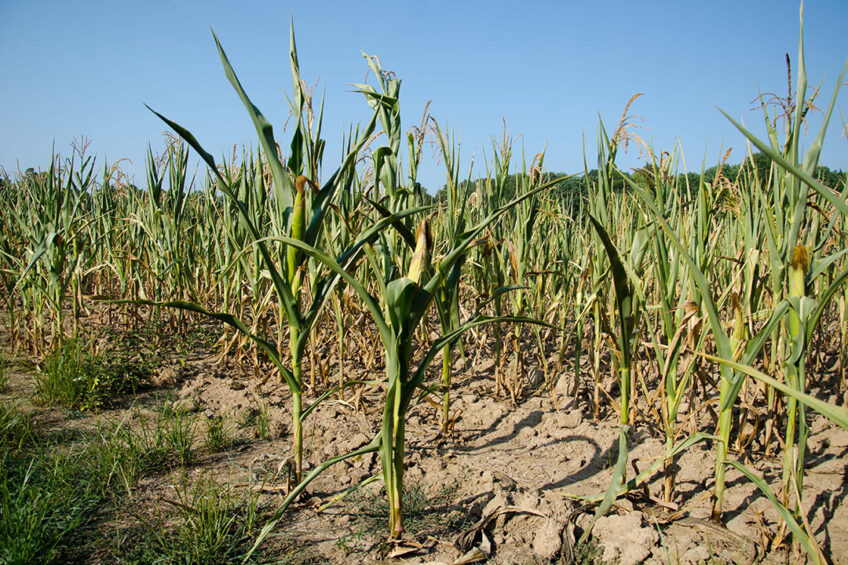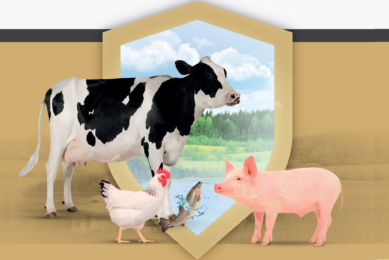Climate change and mycotoxins: Untangling a complex web

Mycotoxin risk is a dynamic issue for producers globally. With the predicted changes in climate, combined with the drive for more sustainable agriculture practices such as reduced tillage and decreases in chemical usage, this risk is set is to evolve even further.
With average global temperatures set to increase, thoughts obviously turn to what impact this will have on the growth of mould and subsequent mycotoxin production. However, the reality is far more complex, as is discussed in a variety of studies. Factors such as carbon dioxide concentration, drought stress and extreme weather events will all impact the delicate relationship between the mould, its plant host and its environment, including the pest species and plants that influence how moulds gain access to developing grains. The impact of climate change will not be consistent but, rather, will depend on local environmental conditions and the specific crops grown. These factors will establish important criteria such as planting, flowering and harvest dates that, along with agricultural practices, such as tillage, crop rotation and fungicide use, will determine the level of mould presence and mycotoxin production. Models are being developed to help predict potential outcomes. While many point toward increased risk from key mycotoxins, such as aflatoxin, deoxynivalenol (DON) and fumonisin, certain scenarios predict a reduction in mycotoxin risk.
Environmental sustainability: A new view on animal productivity?
What does this mean? In recent years, several published meta-analyses have evaluated the effects of individual and multiple mycotoxins on animal performance in species where sufficient data exists. These have shown that in pigs and poultry, individual mycotoxins have varying degrees of impact on average daily gain through their ability to affect feed intake and feed efficiency, with the impact of multiple mycotoxins being greater than individual toxins. Historically, we would view this predominantly as lost economic performance However, it is now increasingly important to also view this through the lens of reduced environmental sustainability because of the increased resource requirements, primarily feed, needed to achieve target slaughter weight. This is particularly relevant for monogastric species, where the contribution of feed to the overall carbon footprint of the system is significant. Mycotoxin presence has a net effect of increasing the carbon footprint of production by reducing feed efficiency and any additional impact on animal health.
The Green Deal and mycotoxins
The recently launched Green Deal is the European Union’s plan to make the EU economy more sustainable, with a climate-neutral goal for 2050. Are mycotoxins a big deal within this? Pre-harvest management strategies — seed variety, tillage methods, crop rotation and pesticide usage are all known to affect the level of mycotoxin contamination in the next crop. Given plans within the Green Deal to increase carbon capture through more ecologically friendly tillage practices and reductions in chemical use, the number of pre-harvest management strategies that help to reduce the mycotoxin risk will be reduced or removed from the farmer’s toolbox. It is difficult to precisely predict the impact such polices will have on future mycotoxin levels, However, given the changing landscape, both from an environmental point of view but also, in the future, from a legislative point of view, it is inevitable producers will have to adapt their businesses.
Novel methods for a mycotoxin management programme
There have been positive developments in new and novel areas of mycotoxin management: from biopesticides and biostimulants through to competitive exclusion strategies using nontoxigenic strains of Aspergillus moulds. While these methods are not perfect, they do offer positive tools for the control of aflatoxin, which is of particular concern from a food safety and security standpoint. Other post-harvest concepts include grain cleaning and processing, which has different implications depending on the exact nature of the grain, mycotoxins present and processing steps. Stages such as sieving, cleaning and thermal treatment can positively affect the level of mycotoxins. Still, the outcomes vary and do not result in mycotoxin-free grains.
Can mycotoxin adsorbents play a role?
A recent meta-analysis conducted on published studies where a yeast cell wall extract (YCWE) (Mycosorb, Alltech) was fed to laying hens consuming diets with and without mycotoxins demonstrated that the contribution YCWE makes to environmental sustainability is significant, as calculated by Alltech E-CO2. Based on the increased performance from feeding a YCWE product, it found that if Mycosorb was added to the diet of 100,000 poultry layers for a period of 63 weeks, it could help to reduce the overall carbon footprint by 3.76%, equal to removing 124 cars from the road, grounding 221 round – trip transatlantic flights or planting 190 trees. While grain producers, particularly those in Europe, look set to face a restricted set of crop management tools for reducing the mycotoxin threat, livestock producers will be expected to understand their production metrics from an increasingly environmental viewpoint. Between these two sets of producers, there will be a requirement for the food and feed industry to better understand mycotoxin contamination levels and act accordingly with respect to the prevailing legislative regulations in its jurisdiction.
References are available on request.
Join 13,000+ subscribers
Subscribe to our newsletter to stay updated about all the need-to-know content in the dairy sector, two times a week.






